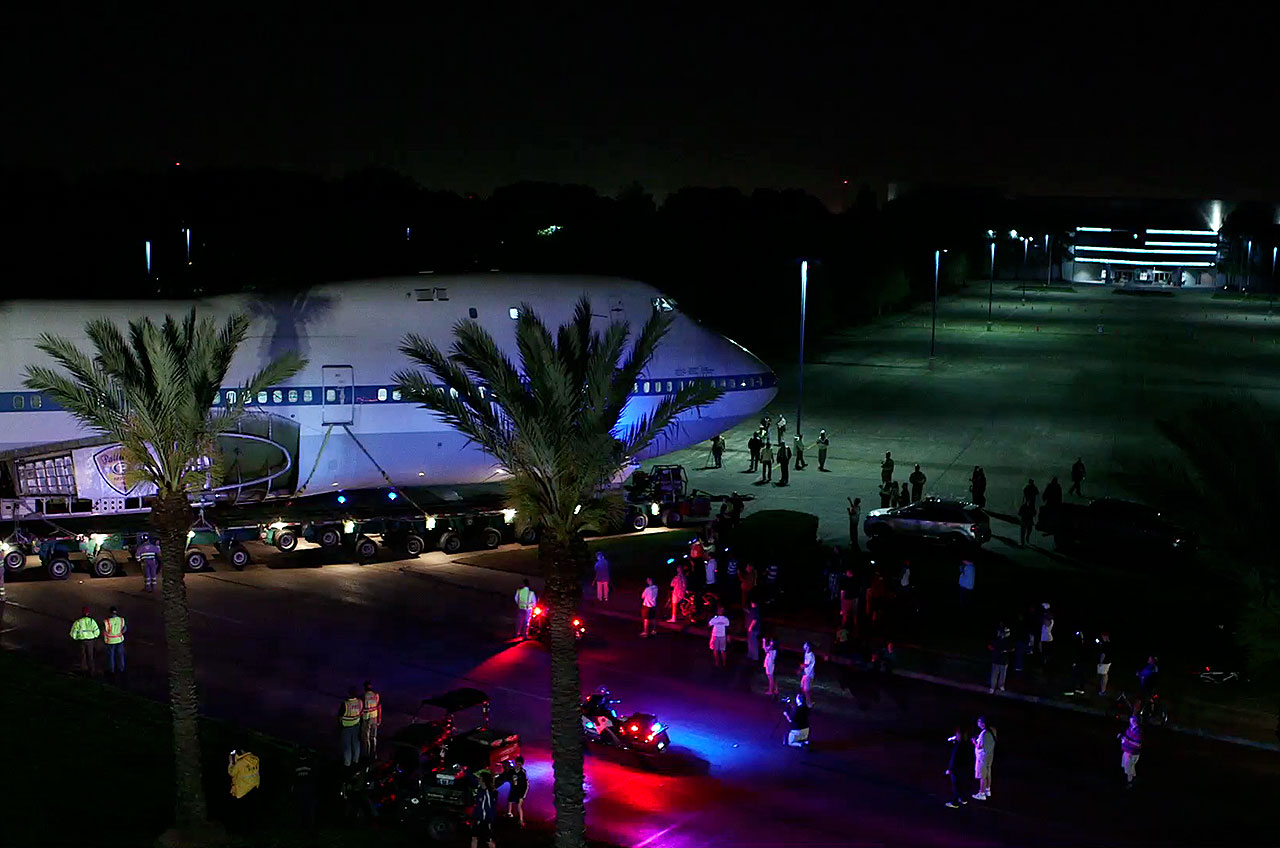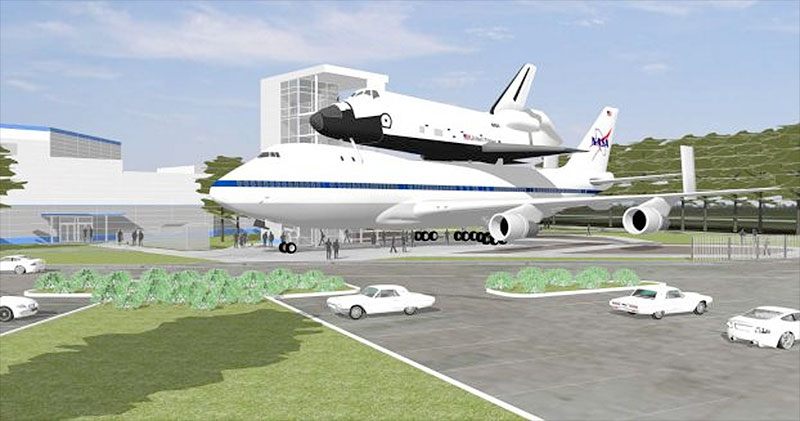Space Shuttle Carrier Jet Arrives 'Home Sweet Home' After Houston Road Trip

Houston, the SCA has landed.
NASA's original Shuttle Carrier Aircraft (SCA), a modified Boeing 747 jumbo jetliner that for three decades flew the space agency's orbiters coast to coast, completed a two-night road trip to Space Center Houston early Wednesday morning (April 30).
"Home sweet home," the center announced on Twitter.
The 8-mile (13 kilometers) move, which began at Houston's Ellington Field on Monday, was in preparation for the jet to become the centerpiece of a new $12 million, eight-story-tall attraction, which will display the SCA topped with the space shuttle "Independence," a high-fidelity, walk-through orbiter replica. The outdoor exhibit is scheduled to open in March 2015. [How NASA Shuttles Rode Piggyback on Jumbo Jets (Photos)]
"Once we are done, you will be able to go into the shuttle, you'll be able to go into its mid-deck and the flight deck," Richard Allen, Space Center Houston president and CEO, said. "You'll also be able to go inside the 747, which we're going to put exhibits in about the history of the shuttle and 747. You'll also be able to go up in the cockpit of the 747."
Picking up where it left off Tuesday morning — the move was limited to the evening hours to minimize the impact to area residents and businesses — the 1,000-foot-long (305 meter) convoy of self-propelled trailers and tractor trailers transported the SCA's fuselage and other dismantled parts from E. Commerce Street near Texas Highway 3 out onto NASA Parkway (also known as NASA Road 1).
Although the second leg of the road trip was considerably shorter than the first, just two miles long (3.2 kilometers), the route presented its own set of challenges. The convoy had to move around a freeway ramp and a large overpass sign had to be lifted so the 63-foot-tall (19-meter) fuselage could proceed forward to Space Center Houston.
Get the Space.com Newsletter
Breaking space news, the latest updates on rocket launches, skywatching events and more!
Pulling into the center's parking lot at around 1 a.m. CDT (0600 GMT), the SCA came to rest adjacent to the shuttle Independence mockup and the recently-laid concrete pad where both will go on display.
With its "big move" accomplished, work to reassemble the aircraft — reattaching its wings, stabilizers, and tail cone sections — was planned to begin in just a few days. The Boeing Company, as part of its sponsorship of the exhibit, provided its Aircraft On Ground, or AOG, support team to take the SCA apart and put it back together.
"We've got a lot of work to do," Allen told collectSPACE. "It is going to take five or six weeks, maybe seven, to get [the aircraft] on the pad, get it all back together and then we have got to start the process of building the [access] tower and doing the exhibitry."

Fundraising also continues. A large banner hung from both sides of the aircraft for its move through Houston's streets advertised to text "Shuttle747" to 41444 to donate to the effort.
"We're $9 million raised out of $12 million, so we've still got $3 million to go," Allen said.
The SCA, known by its tail number N905NA or NASA 905, started off service as an American Airlines' passenger jet in 1970. It was acquired by NASA in 1974 and, after two years of being modified for the job, became the first of the space agency's two Shuttle Carrier Aircraft.
As the original SCA, NASA 905 flew as part of the space shuttle's 1977 approach and landing tests before ferrying the space-flown orbiters across the country throughout the decades that followed.
NASA 905's final shuttle ferries were to deliver Discovery, Enterprise and Endeavour to their respective museums in Virginia, New York and California. The SCA made its last flight, a short proficiency hop, in December 2012, capping its total of 3,774 takeoffs and landings. It was the 86th out of 1,500 Boeing 747 jets to be built to date.
Click through to collectSPACE.com to see more photos from the Shuttle Carrier Aircraft’s "big move" to Space Center Houston.
Follow collectSPACE.com on Facebook and on Twitter at @collectSPACE. Copyright 2014 collectSPACE.com. All rights reserved.
Join our Space Forums to keep talking space on the latest missions, night sky and more! And if you have a news tip, correction or comment, let us know at: community@space.com.

Robert Pearlman is a space historian, journalist and the founder and editor of collectSPACE.com, a daily news publication and community devoted to space history with a particular focus on how and where space exploration intersects with pop culture. Pearlman is also a contributing writer for Space.com and co-author of "Space Stations: The Art, Science, and Reality of Working in Space” published by Smithsonian Books in 2018.In 2009, he was inducted into the U.S. Space Camp Hall of Fame in Huntsville, Alabama. In 2021, he was honored by the American Astronautical Society with the Ordway Award for Sustained Excellence in Spaceflight History. In 2023, the National Space Club Florida Committee recognized Pearlman with the Kolcum News and Communications Award for excellence in telling the space story along the Space Coast and throughout the world.










